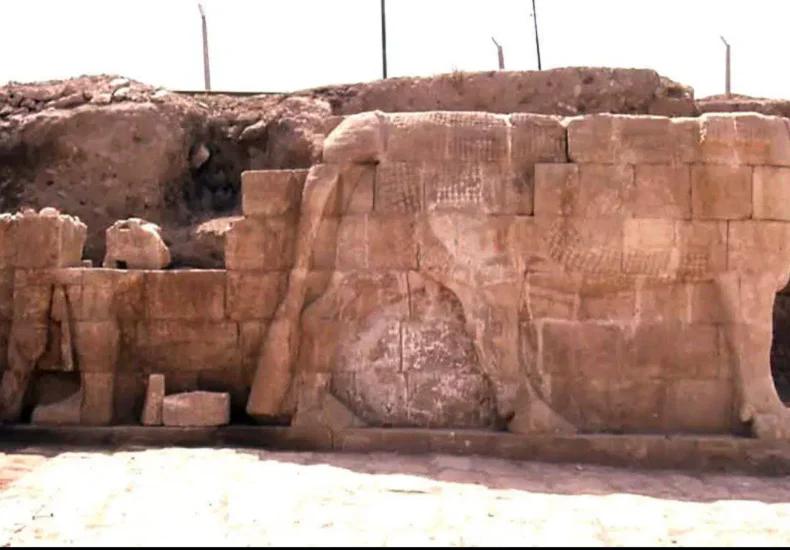
Fifteen New Lamassu Unearthed in Nineveh: German Team Uncovers Stunning Reliefs in Ancient Assyrian Palace
Archaeologists have uncovered fifteen monumental lamassu and newly preserved bas-reliefs inside a Neo-Assyrian military palace at Tell Nabi Yunus, within the ancient city of Nineveh — one of Mesopotamia’s most powerful capitals.The findings, announced by the University of Heidelberg’s German archaeological mission, come just weeks after the revelation of a six-meter-tall colossal winged bull, the

Unbroken Life Through the Ages: 8,000 Years of Continuous Settlement Unearthed at Gökhöyük in Konya
Archaeologists in Türkiye’s central province of Konya have uncovered evidence of an extraordinary 8,000-year span of continuous human habitation at Gökhöyük (also known as Kanal Höyük), located in the Seydişehir district. First identified by British archaeologist James Mellaart in 1954, the site reveals settlement layers dating from the 7th millennium BCE to the 1st millennium
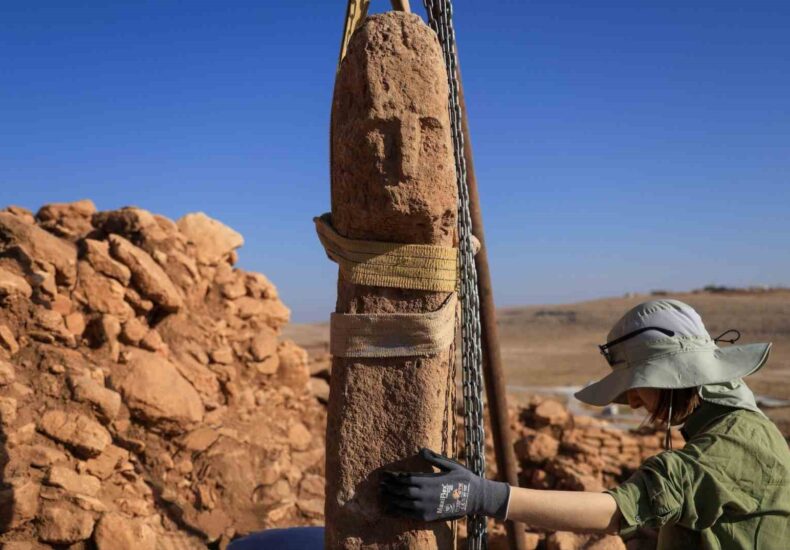
A Historic First at Karahantepe: Human-Faced T-Shaped Pillar Unearthed in Türkiye
Archaeologists have uncovered a T-shaped pillar carved with a human face at the Neolithic site of Karahantepe in southeastern Türkiye — a discovery described as a first in human history. The finding was announced by Minister of Culture and Tourism Mehmet Nuri Ersoy on his official X (Twitter) account, where he wrote: “Karahantepe — A
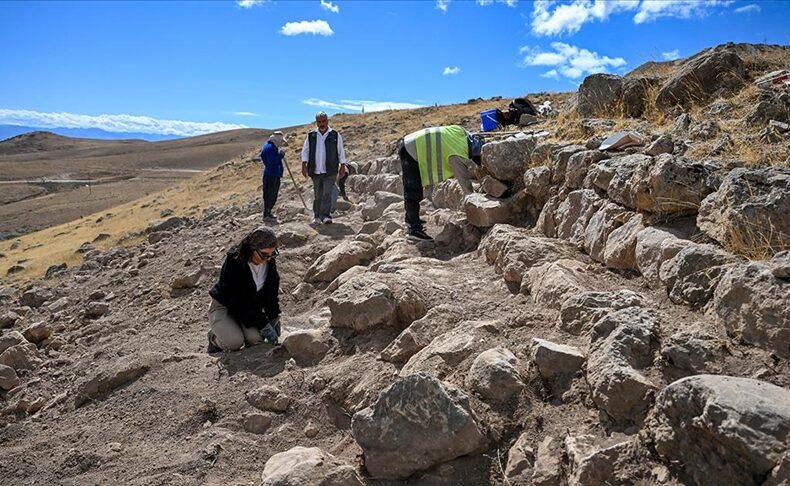
Ongoing Excavations at Garibin Tepe Near Van Shed Light on Urartian Architecture and Conservation Efforts
Archaeological works continue at Garibin Tepe in Türkiye’s Van province, one of the most intriguing Urartian sites of recent years. Excavations this season have focused on documenting massive walls, lion statues, and wall paintings as researchers seek to understand the architectural layout and royal character of the ancient complex. Located about 30 kilometers from central

Rare Egyptian Relief Depicting God Tutu Found in Roman Bath at Sagalassos: Crafted from Afyon Marble
Archaeologists at the ancient city of Sagalassos in Türkiye’s Burdur province have identified a rare marble relief depicting the Egyptian sphinx-god Tutu, carved from Afyon (Docimian) marble and discovered inside a Roman bath complex. The finding — a striking blend of Anatolian craftsmanship and Egyptian iconography — reveals how distant cultures interacted in the artistic
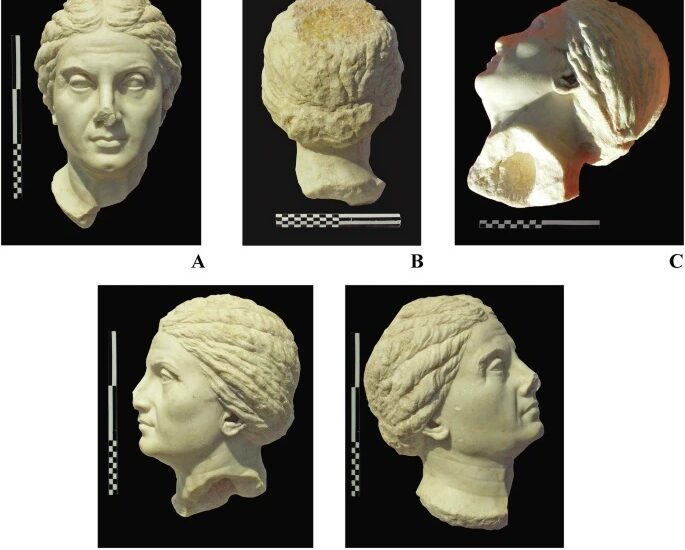
Scientists Identify the Woman Behind a 2,000-Year-Old Marble Head Found in Crimea
Researchers from Poland and Spain reveal that the ancient sculpture depicts a Roman lady named Laodike A team of researchers from Poland and Spain has identified the subject of a marble female head discovered in Crimea in 2003 as Laodike, a Roman woman who lived in the early centuries CE.According to the study, Laodike was

Unique in the World: The Eros Mosaic from Yumurtalık Shows the God of Love Fishing on a Hippocampus
Discovered during rescue excavations in 2013 in the coastal town of Yumurtalık (ancient Aegeai) in southern Türkiye, the mosaic depicts the love god Eros fishing while riding a Hippocampus—a half-horse, half-fish sea creature. Scholars describe it as a one-of-a-kind example in the entire Mediterranean world. From rescue excavation to museum The mosaic was unearthed in

3,200-Year-Old Hittite Sculpture Workshop in Yozgat Damaged by Looters
A 3,200-year-old Hittite sculpture workshop in Karakız, a village in Sorgun district of Yozgat, Türkiye, is being ravaged by illegal excavations. A basalt lion statue—one of the few surviving examples of Hittite stonework in the region—has been severely damaged by treasure hunters, raising urgent calls for protection. Archaeologists have identified the site as a rare

2,800-Year-Old Sanctuary of the Phrygian Mother Goddess Matar Unearthed at Attouda Ancient City
Archaeologists working at the ancient city of Attouda in Denizli’s Sarayköy district have uncovered a sanctuary dedicated to the Phrygian Mother Goddess Matar (Kybele), dating back 2,600–2,800 years. The discovery includes a monumental rock sanctuary, a sacred cave, and a unique twin rock idol. The excavations are carried out under the supervision of Hulusi Ünsal,
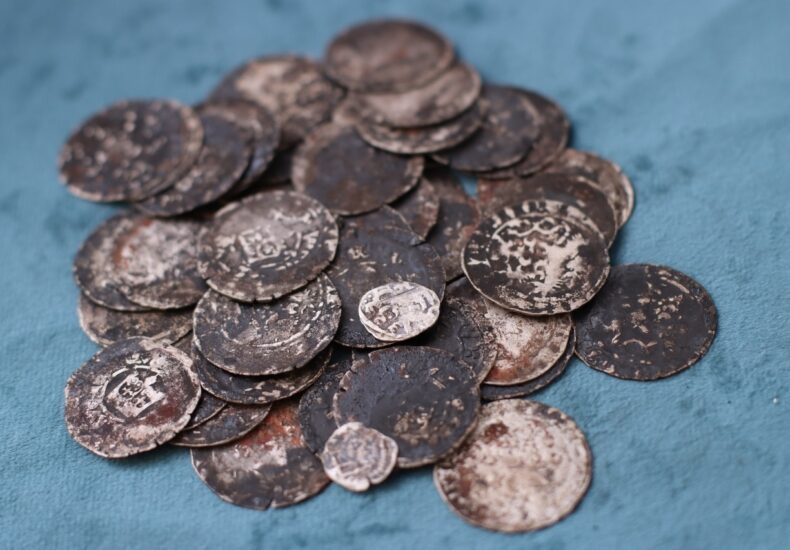
The ‘Dollar of the Middle Ages’ Found in Smolensk: 48 Silver Coins Reveal Trade Links from Lithuania to Crimea
Archaeologists in Smolensk have unearthed a 600-year-old treasure of 48 silver coins, including Prague groschen—known as the “Dollar of the Middle Ages”—a Lithuanian denarius from the reign of Vytautas the Great, and a rare Crimean dang. The find highlights Smolensk’s role as a crossroads of trade and political struggle in early 15th-century Eastern Europe. The
